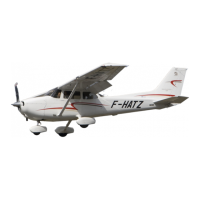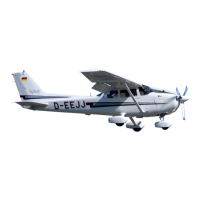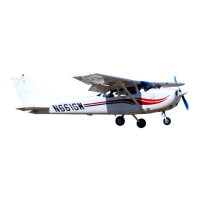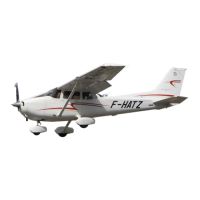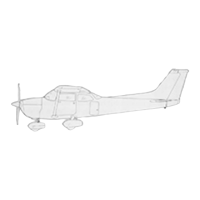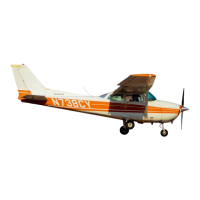CESSNA
MODEL 172S NAV
III
SECTION 9 - SUPPLEMENTS
SUPPLEMENT 1
NORMAL PROCEDURES (CONTINUED)
6. Place the ELT master function selector switch
in
the
ON
position.
Verify that the transmitter annunciator light
on
the
ELT
and the
remote switch/annunciator
on
the instrument panel are on.
7. Place the
ELT
master function selector switch
in
the OFF/RESET
position.
8.
Reposition ELT master function selector switch to AUTO.
9. Reconnect antenna cable to
ELT.
WARNING
A TEST WITH THE ANTENNA CONNECTED SHOULD
BE APPROVED AND CONFIRMED BY THE NEAREST
CONTROL TOWER.
NOTE
Without
its
antenna
connected,
the
ELT
will
produce
sufficient signal to reach the airplane transceiver, yet it will
not
disturb
other
communications
or
damage
output
circuitry.
After accumulated test
or
operation time equals 1 hour, battery pack
replacement is required.
IN-FLIGHT MONITORING AND REPORTING
Pilot's are encouraged to monitor 121.5 MHz and/or 243.0 MHz while
in
flight to assist
in
identifying possible emergency ELT transmissions.
On
receiving a signal, report the following information to the nearest air
traffic control facility:
1.
Your position at the time the signal was first heard.
2.
Your position at the time the signal was last heard.
3.
Your position at maximum signal strength.
4. Your flight altitude and frequency
on
which the emergency signal
was heard - 121.5 MHz
or
243.0 MHz. If possible, positions
should
be
given relative to a navigation aid. If the aircraft has
homing equipment, provide the bearing to the emergency signal
with each reported position.
FAA APPROVED
172SPHAUS-S1-00
U.S.
S1-11

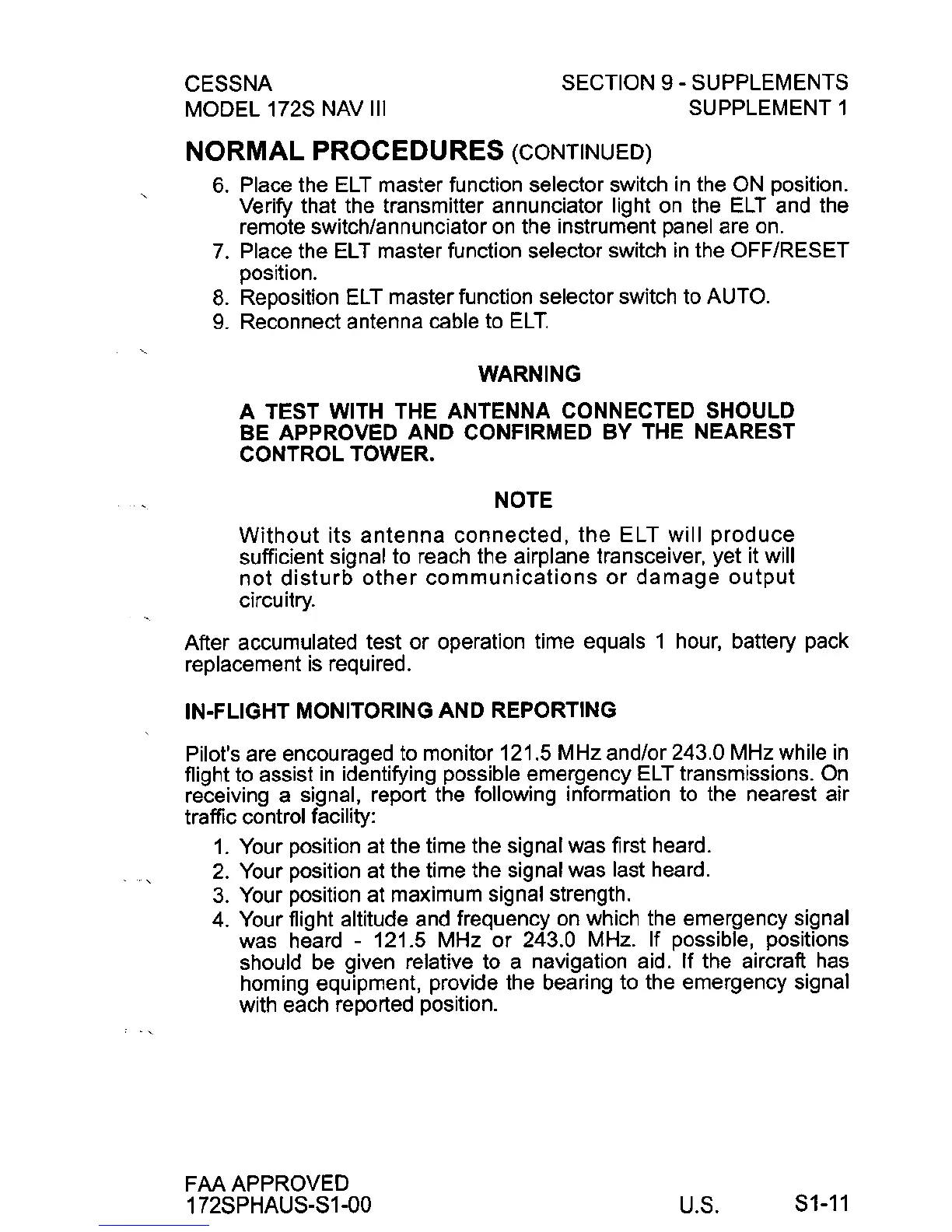